Japanese tea is tea manufactured without oxidation process after tea plucking. It is generally called “Green tea”.
Japanese tea, Black tea and Oolong tea are all made from the same evergreen Theaceae named tea plant. But these 3 teas are made by different processes (oxidation process) and they have quite different tastes and characters. Black tea is classified into oxidized tea, Oolong tea is semi-oxidized tea and Japanese tea is non-oxidized tea.
Japanese tea contains lots of nutrition!
You probably drink a cup of tea on various occasions: when you want to be relaxed, when you have a chat with your family, when you have guests, or when you have Japanese sweets.Japanese tea is known not only as tasty but as good for your health because Japanese tea, that is non-oxidized tea, contains lots of nutrition from tea leaves due to its strong astringency and bitterness.
Nutrition in tea leaves is sometimes changed or lost during the oxidation process. For example, Sencha, that is a kind of Japanese tea, contains 260 mg of vitamin C, on the other hand, Black tea, that is oxidized tea, doesn’t contain any vitamin C.

Various benefits of Japanese tea
The research by National Cancer Center Japan shows that it declines the risks of death to have more than 5 cups of Japanese tea every day. Here are other benefits of Japanese tea by each component.
◇Catechin
Catechin brings out the astringency and bitterness unique to Japanese tea and has strong antioxidants. It is said that it is effective in reducing body fat to have 500-600 mg of Catechin of green tea every day. And it also has effects on the suppression of cancer, tumor, blood pressure rise, and blood glucose level rise, antibacterial, antivirus, the prevention of cavity and bad breath.
◇Caffeine
This component is also contained in coffee and has a stimulating effect. It works on awakening or improvement in concentration because caffeine stimulates sympathetic nerves and activates the brain. In addition, it also works on diuretics and fatigue recovery.
◇Theanine
This is a kind of amino acid contained in tea leaves and makes tea taste better as an Umami component (one of the 5 basic tastes in addition to sweetness, sourness, saltiness and bitterness). This is contained more especially in Tencha and Gyokuro among some kinds of Japanese tea. Theanine is effective in antistress and makes us relaxed physically and mentally.
◇Vitamins
Japanese tea contains lots of vitamins effective in antioxidants. Vitamin C is an essential component to create collagen and works on keeping skin elastic or prevent melanin pigment from making spots. In addition to that, it contains vitamin A effective in the suppression of cancer, vitamin B in the prevention of angular cheilitis and vitamin E in antiaging.
◇Minerals
Japanese tea is also rich in minerals like potassium, calcium, iron and zinc. These components work on all of our physical functions to regulate and are essential to keep us healthy.
Way to brew
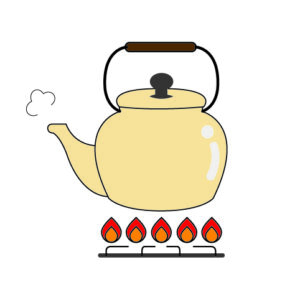
STEP1
To boil water.
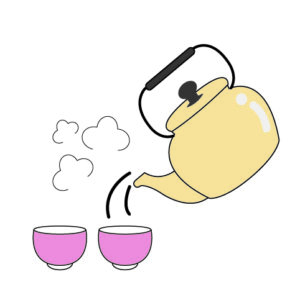
STEP2
To pour boiling water to tea cups
and cool down to 70-80 degrees.
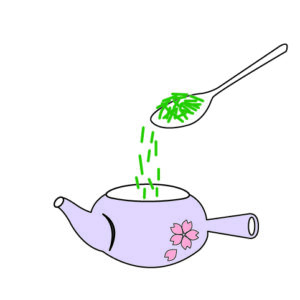
STEP3
To put tea leaf into a teapot.
2〜3g per person.
(a tea spoonful of tea leaf)
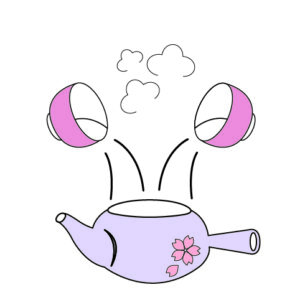
STEP4
To pour hot water of the process 2
into a teapot and wait for a minute.
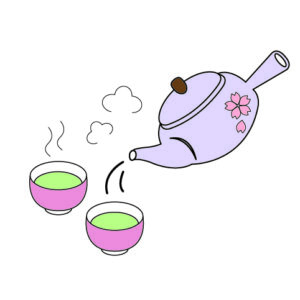
STEP5
To pour tea until the last drop drips.
